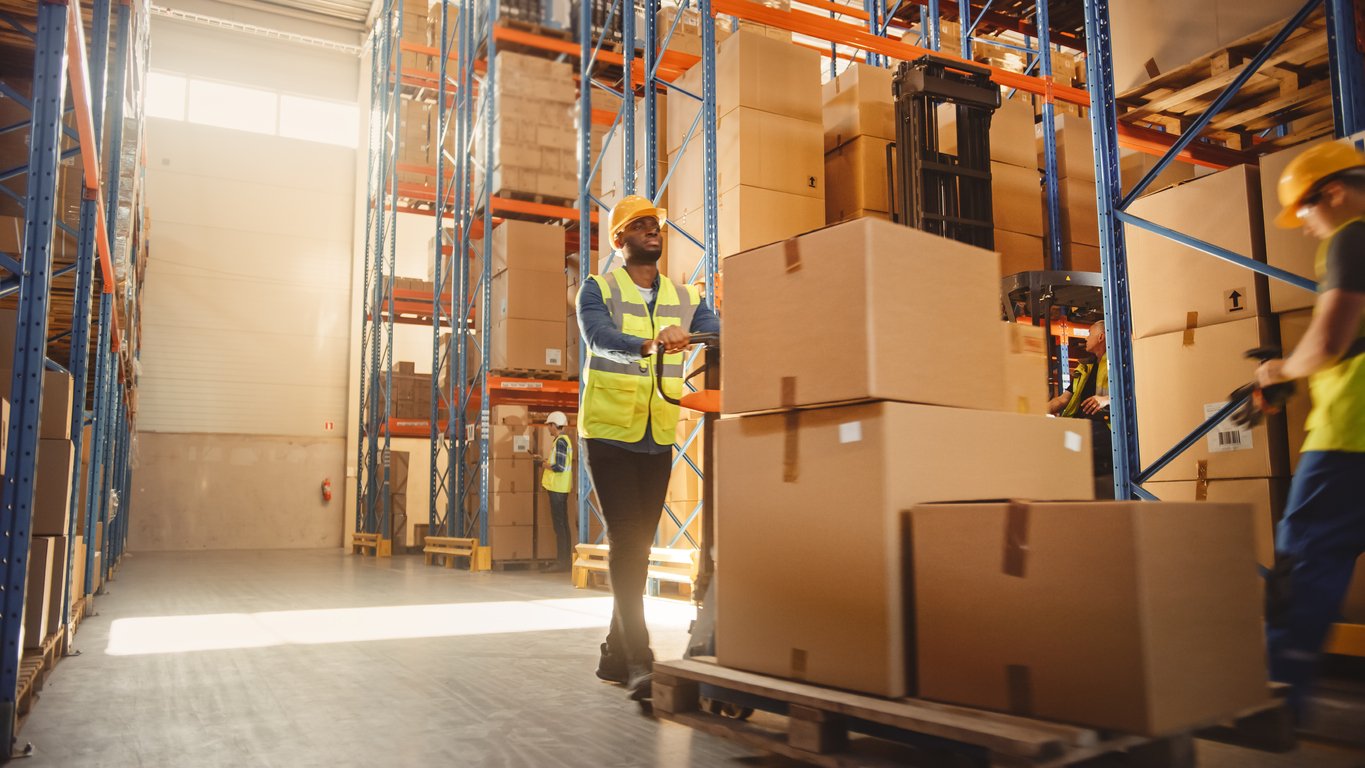Upheaval uncovers opportunity. It’s no secret that the last two years have changed the way we view the supply chain. Logistics companies have had to embrace a whole new way of thinking that’s centered in agility. Radical innovations have taken hold at the front and back end of the supply chain. The way in which we source raw materials to the way the industry as a whole executes on last-mile fulfillment has changed dramatically.
In terms of innovation, the last mile is a crowded space. The middle mile is the new frontier. In some ways, it’s the new last mile, and it’s about time for the logistics industry to pay attention to the advantages of middle-mile build-up.
Middle Mile Versus Last Mile: Key Differences
For years, last-mile transport and shipping have been the hot-button topic. Key players, such as Amazon, have revolutionized the method and speed at which products get from your warehouse to your customers’ hands, beginning with two-day Prime delivery and culminating in trial versions of a new one-hour delivery service.
It should come as no surprise that there’s a significant emphasis on last-mile deliveries; it’s what drives customer satisfaction, especially in a world where our homes have become second offices, classrooms, and even entertainment hubs. Last-mile delivery is an art form that requires skill and experience to master its complexity. But with such a deluge of progress, technology, and experience, the 3PL industry has crafted a well-vetted methodology for dealing with the end of the supply chain. Now it’s time to tame the wild gray area between raw material and finished product.
Middle mile logistics is concerned with moving products through the supply chain’s intermediary steps —from the production floor to warehouse— in preparation for last-mile shipping. And it’s filled with just as much complexity as the last mile, if not more.
Seeing Significant ROI in a Competitive Market
Addressing middle mile logistics makes sense from a business perspective, especially where your return on investment is concerned. Once upon a time, everyone from regional 3PL providers to gargantuan retail companies were focused on streamlining their last-mile delivery model. The player that could get the shipment there the fastest, and at the lowest cost to the consumer, would be the winner. But now that last-mile infrastructure has been built up and built out, there’s not a lot of competitive real estate left in that space. Large-scale methods such as Prime, FBA, and Walmart’s own fulfillment services have given rise to quicker, leaner, and more creative solutions. When it comes to the last mile, there are no longer major differences between carriers. Competitiveness has given way to parity, with every company offering a virtual snapshot of the same logistical picture in terms of fulfillment and distribution.
That’s why savvy logistics professionals are turning their attention towards the middle of the supply chain in an effort to streamline what’s never been streamlined before and realize a proper ROI. The middle mile is relatively new, but there’s already some friction brewing when it comes to middle-mile methodology: a tug-of-war between technology and the human factor.
Rethinking Process, Not Progress
Technology and progress go hand in hand. Whenever there’s a watershed moment in the logistics arena —whether it’s an exciting leap forward or a reflective moment of crisis— as an industry, we look toward technology to ease the transition. Whether it’s a large-scale eCommerce platform that drives your digital storefront or the WMS that powers your warehousing and fulfillment activities, we inevitably view the coming horizon through the lens of technological progress. But the middle mile is a different beast altogether.
Sure, technology still plays an integral role when it comes to middle-mile transport, and we’ll get to that role in a minute, but a successful reimagining of middle mile logistics is as equally contingent on people as it is software solutions. The key is rethinking your process(es) rather than reinventing the wheel.
Think about it from this angle: middle-mile operations aren’t exactly new territory. The supply chain has always been dependent on a number of interlocking and sequential processes in order to run efficiently. As industry professionals, walking the middle mile requires us to refine our existing infrastructure rather than rebuild it. Technology doesn’t exactly take a backseat, but it is relegated to copilot.
For rejuvenated middle-mile operations, you need a human touch. To implement that requires a healthy dose of creativity, the proverbial “think outside the box” mentality. You need logistics experts that understand your supply chain inside and out, especially the complexity and stress of central operations between procurement and fulfillment. You need associates who can read between the lines and extract data from existing systems, then use that data to repurpose systems and tech while streamlining your processes.
The Role of Tech in Middle Mile Logistics
According to Freight Waves, the warehousing industry sees anywhere from 10-30% of its supply chain assets disappear from warehousing locations every single year. That metric alone speaks to the opportunity middle-mile logistics represents. And while the human factor remains an incredibly important piece of the puzzle, technology still has an important role to play.
The middle mile is filled with blind spots. Process efficiency is one way to clean up those virtual blind spots. Another method is by effectively leveraging your existing tech stack to help improve operational efficiencies. A WMS featuring a robust suite of tracking features and analytics can help you keep eyes on important assets in transit as they move through the heart of your supply chain. Even more effective is the use of well-established tech tools, such as Microsoft BI, to help pull together data from across your enterprise so that flesh and blood and employees can use that data to carry out warehousing and fulfillment activities more efficiently.
Walking the Middle Mile
Middle-mile logistics is uncharted territory, at least as far as reform is concerned. And while it is not easy to disrupt well-established infrastructure, it is at times necessary in order to maintain your company’s competitive edge. Harnessing middle-mile logistics and overcoming their inevitable complexity is a matter of using the existing tools you have combined with a renewed emphasis on human ingenuity. However, those businesses that start attacking the middle mile will find that the ROI on logistical assets will skyrocket.
Symbia Logistics is an industry expert in all things supply chain related. After three generations in the industry, we’ve seen it all, and we’re ready to help you tackle the middle mile. Looking to reimagine your operations? Contact us today.





